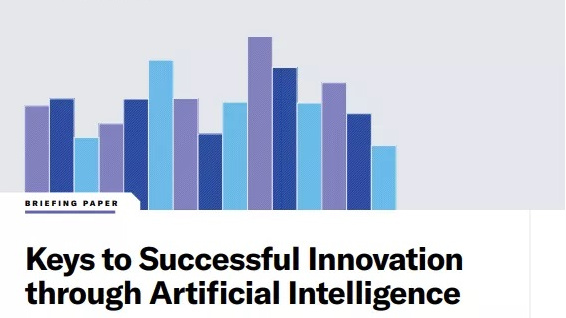How to empower employees to accelerate emissions reduction
With ICT accounting for as much as 3% of global carbon emissions, the same as aviation, the industry needs to increase emissions reduction

Making net-zero goals directly relevant to each individual could be the most powerful tool for encouraging employees to take charge and help IT organizations and their industry reduce emissions faster.
That's according to Chia-Huei Wu, professor in management at King's Business School, King's College London, who explains that research suggests developing personally relevant narratives that individual employees directly relate to and understand – as opposed to simply providing explanations or facts.
"This can be based on a kind of storytelling," he says.
It makes sense to have all hands on deck where possible – the task is huge, after all.
According to the Intergovernmental Panel on Climate Change (IPCC), average global temperatures must rise no more than 1.5°C (34.7°F) this century to avoid catastrophic climate change, which means slashing emissions 43% by 2030 versus 2019 levels and at least 60% by 2035.
"The most important factor is motivation – it's about whether people want to do something, using their internal time," Wu says. "People may not think a fact (such as a figure from an emissions estimate) is relevant to them personally."
Read more
A simple example might be developing a communication strategy that encourages employees to rethink sending emails, how much data they use, and the like. Even though these can be small things, the direct relevance to their own behaviors is more obvious than other initiatives, he points out.
Get the ITPro daily newsletter
Sign up today and you will receive a free copy of our Future Focus 2025 report - the leading guidance on AI, cybersecurity and other IT challenges as per 700+ senior executives
Of course, organizations can help further by examining the potential for in-house mechanisms and initiatives that can foster greater efforts and provide routes to success, all of which should be embedded into daily work activities.
An example might be forming groups or "small clubs" that support each other to take action or suggest innovations or improvements.
When employees can understand who is benefiting from an action or activity and why – understanding how everyone's work is connected across the whole organization – that can also increase the understanding of the meaning of their own work and how what they do can be influential, Wu points out.
"It sounds simple but has come out powerfully in organizational research" he says.
You might also consider that increasing focus on emissions can attract and develop more talent in the first instance, as Susan Kenniston, global sustainability head at Wipro, adds.
"Even knowing how to talk about it, even for recruiters and writing job descriptions and things, threading it into how you represent the company, it really starts there," she says.
RELATED RESOURCE

Overcome the common challenges businesses face when trying to implement AI solutions
Create a kind of "curriculum around sustainability that meets employees where they're at", she says.
Enabling education at executive and management levels that involves more junior employees can drive "faster feedback loops" on emissions over time, while rethinking metrics and key performance indicators (KPIs) in relation to the overall business value framework, she says.
Jillian Moore, sustainability and global advisory lead at Avanade, agrees, adding that leaders need to accept and be comfortable with the fact they no longer have all the answers, while also communicating better and more consistently.
"We have a lot of people on the ground out there with clients, usually at slightly earlier levels in their career, who are hugely passionate and know more about sustainability," she says. "Sometimes we can be holding them back, not giving them the runway or space to actually act."
Get with the program
While it can be difficult to get consensus across every individual in a company, people involved at whatever level can often agree on the direction of travel. Then the task can become more about ensuring everyone can play their part and deciding what each individual can contribute, she says.
"You … need a program that helps take on board all these ideas," says Moore. "And you need transparency of outcome with everybody."
For example, if you're reducing travel and you show how the associated cost savings benefit a role it can feel like a win-win, encouraging people to bring forward further ideas, Moore says.
She also advises that organizations make emissions reduction part of people's objectives and appraisals, knitted directly into the job description; sustainability as indivisible from personal career progression.
"We're still at a point where people are prepared to do a lot of this altruistically and some people are very passionate about it. But I don't know how long that phase will last," Moore says.
Rajkumar Vijayarangakannan, leader of network design and devops at ManageEngine, emphasizes education and awareness initiatives as critical to sustainable practice for increasingly power-hungry machines, woven in right from the data center construction phase.
"Our team runs the bigger energy consumption areas, the data centers [which account for] 60-70% of our energy consumption," he says. "Even five years ago, it was different. We have to optimize every space; even the smallest optimization helps us save a lot."
Vijayarangakannan says he typically starts by talking to employees about switching off the lights. That might sound simplistic but actually it demonstrates awareness that every little action makes a difference, and that can very much be down to individual choices.
The effectiveness of actions can be easily showcased these days with the use of temperature sensors, for example, he adds.
"Everything is involved with carbon emissions. So we started giving awareness programmes on which operations, methods and practices can give much better carbon emission control," Vijayarangakannan says. "Then they can, as employees, all be aware of it and then do their own individual things. Each and every one is part of a green program, and it starts from the level one employee."
In one small data center project, the vacuuming was consuming a lot of power; noticing this, the organization changed the method of cleaning, resulting in much lower ongoing emissions. "Every aspect of it is our individual responsibility," Vijayarangakannan says.
Every little helps
Sheryl Moore, head of sustainability at Stone Group, similarly favors getting buy-in from everyone to fully embed sustainability.
"Many people help me with this," she says. "A lot of it comes down to the values and the culture of the organization. If you encourage a more open conversation, that really helps."
People have to feel safe to voice their opinions and see that ideas also do get implemented, without necessarily needing to fully define, curate or present that idea in full themselves, Moore notes.
As James Robey, global head of environmental sustainability at Capgemini, says, tackling the climate crisis relies on collective action.
"It’s vital for employees to be fully engaged," Robey says. "Our most far-reaching ... was a VP-led initiative to boost employees’ understanding of sustainability, while sparking new ideas and learnings for climate action."
Fleur Doidge is a journalist with more than twenty years of experience, mainly writing features and news for B2B technology or business magazines and websites. She writes on a shifting assortment of topics, including the IT reseller channel, manufacturing, datacentre, cloud computing and communications. You can follow Fleur on Twitter.
